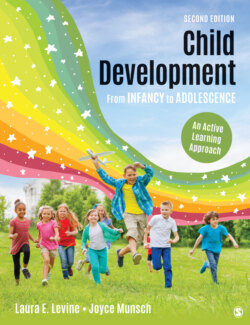Читать книгу Child Development From Infancy to Adolescence - Laura E. Levine - Страница 235
Environmental Pollutants
ОглавлениеThere are any number of toxic chemicals in our homes and workplaces that could be harmful to a pregnant woman (Wilson, 2014). These include household cleaning products, insect repellants, pesticides, and solvents. If possible, pregnant women should not use these products, and if they can’t be avoided, they should be replaced with ones that are less toxic. Pregnant women also can be exposed to lead in the paint used in older homes or from the pipes used in older plumbing. They need to avoid exposure to X-rays, for example from dental exams, and if hazards exist in their workplace, they should talk with their employer and physician about ways to reduce or eliminate this exposure.
A particularly harmful group of chemicals are called endocrine disruptors because they interfere with the functioning of the hormonal system in our bodies and can interfere with the normal functioning of cells (National Institute for Environmental Health Sciences, 2016). When transmitted through the placenta, they affect the development of the part of the brain that controls metabolism and have been associated with an increased risk of certain cancers, abnormal growth patterns, and neurodevelopmental delays in children (World Health Organization, 2016). Women need to educate themselves about the sources of these chemicals which are found in everyday objects such as plastic bottles, detergents, cosmetics, and pesticides, and avoid them whenever possible.
Endocrine disruptors: Chemicals that interfere with the functioning of the hormonal systems of the body.
Although there are a number of factors that can adversely affect prenatal development, there is much a pregnant woman can do to help ensure her own health and the health and well-being of her baby before and after birth. The goal of any pregnancy is a healthy baby and a healthy mother, and fortunately this is exactly what happens in most cases. Although the risks are real and we need to guard against them whenever possible, there also is a great resilience in the developing child. And, as we point out throughout this book, what happens to the child after birth has a huge impact on the eventual developmental outcome. Children who start life with birth defects or developmental deficits benefit greatly from growing up in a nurturing, supportive environment. As you will learn in later chapters, early intervention also can do a great deal to help these children develop to their fullest potential.
